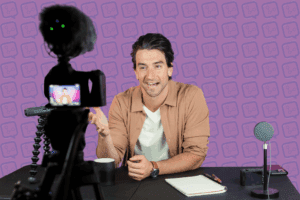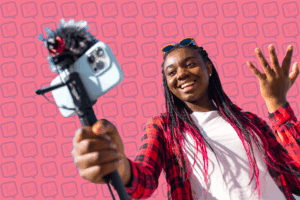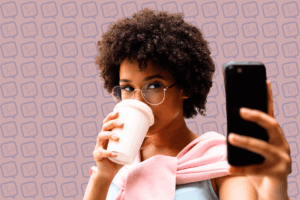The Top Three Reasons Brands should Partner with Micro-Influencers

As a brand, you might feel as though you need a partnership with a major celebrity or an influencer with millions of followers to gain more recognition. While this is one strategy, bigger isn’t necessarily always better. In fact, micro-influencers hold massive power when it comes to influencer marketing campaigns.
A micro-influencer is a creator with follower counts of 10,000 to 100,000 on any of their given social media platforms. Macro-influencers are those who have 500,000 to 1 million followers, and nano-influencers hold 100 to 10,000 followers on their accounts.
While sometimes overlooked, working with micro-influencers can be beneficial for brands and influencers alike. Here are a few ways partnering with micro-influencers can grow your brand.
Micro-influencers are seen as more authentic.
Authenticity is crucial from an audience perspective. When a micro-influencer works with a brand, it is likely because that creator reached out for the partnership. This indicates that the creator truly likes the brand’s products or services and believes their audience would also benefit from the product or service. An audience will be more likely to purchase a product if they feel the creator is not doing the partnership purely for financial gain.
Micro-influencers have more engagement.
While micro-influencers might have a smaller follower count, they actually have higher engagement than a creator that is categorized as a macro-influencer. Having a small following means that the audience feels closer to the creator because of the direct access they normally have with the creator. Smaller creators are normally very interactive with their audience and that only achieves a higher level of “influence” that the creator has over their followers. When the audience feels close with the creator, they will likely feel more comfortable trusting reviews and following through with purchases recommended by the micro-influencer.
Micro-influencers serve niche groups.
These creators with small followings tend to focus on specific interests of the audience. As a brand, it can be useful to find creators with interests that match with the brand’s audience to create more opportunities for sales. The lower view counts, paired with the high conversion rate mean that brands can acquire customers at a much lower cost than a massive influencer with a higher price point and larger views. Brands can also interact with these niche groups to expand their consumer base and learn new things about their consumers.
The idea of working with micro-influencers continues to gain popularity in the influencer marketing industry. Teaming with creators that have smaller followings is the most authentic, cost-effective way to promote a brand’s product or service. InfluenceLogic has become a market leader in running these programs and works with thousands of creators each month across their extensive brand portfolio.
If you’re interested in learning more about InfluenceLogic and how we provide brands the opportunity to grow a scalable influencer program, feel free to reach out to our Brand Partnerships team at brandpartnerships@influencelogic.com.






